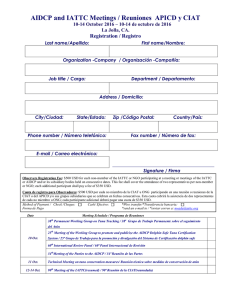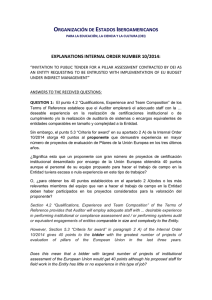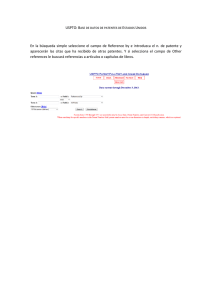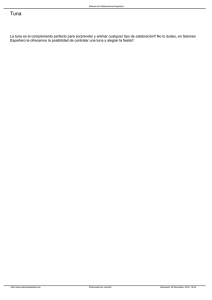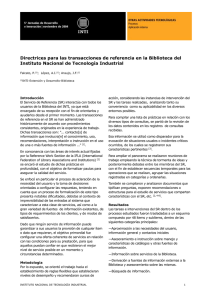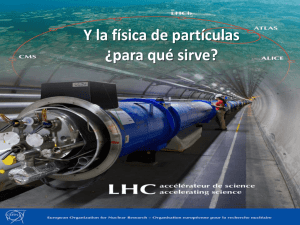reference points and harvest rate control rules
Anuncio
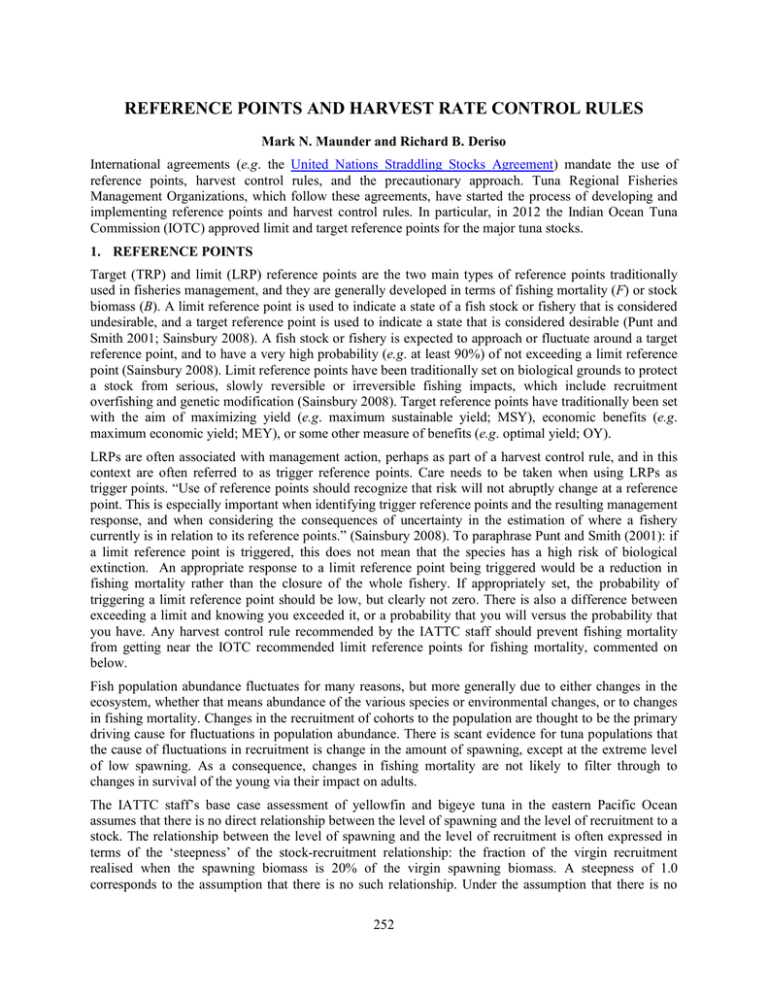
REFERENCE POINTS AND HARVEST RATE CONTROL RULES Mark N. Maunder and Richard B. Deriso International agreements (e.g. the United Nations Straddling Stocks Agreement) mandate the use of reference points, harvest control rules, and the precautionary approach. Tuna Regional Fisheries Management Organizations, which follow these agreements, have started the process of developing and implementing reference points and harvest control rules. In particular, in 2012 the Indian Ocean Tuna Commission (IOTC) approved limit and target reference points for the major tuna stocks. 1. REFERENCE POINTS Target (TRP) and limit (LRP) reference points are the two main types of reference points traditionally used in fisheries management, and they are generally developed in terms of fishing mortality (F) or stock biomass (B). A limit reference point is used to indicate a state of a fish stock or fishery that is considered undesirable, and a target reference point is used to indicate a state that is considered desirable (Punt and Smith 2001; Sainsbury 2008). A fish stock or fishery is expected to approach or fluctuate around a target reference point, and to have a very high probability (e.g. at least 90%) of not exceeding a limit reference point (Sainsbury 2008). Limit reference points have been traditionally set on biological grounds to protect a stock from serious, slowly reversible or irreversible fishing impacts, which include recruitment overfishing and genetic modification (Sainsbury 2008). Target reference points have traditionally been set with the aim of maximizing yield (e.g. maximum sustainable yield; MSY), economic benefits (e.g. maximum economic yield; MEY), or some other measure of benefits (e.g. optimal yield; OY). LRPs are often associated with management action, perhaps as part of a harvest control rule, and in this context are often referred to as trigger reference points. Care needs to be taken when using LRPs as trigger points. “Use of reference points should recognize that risk will not abruptly change at a reference point. This is especially important when identifying trigger reference points and the resulting management response, and when considering the consequences of uncertainty in the estimation of where a fishery currently is in relation to its reference points.” (Sainsbury 2008). To paraphrase Punt and Smith (2001): if a limit reference point is triggered, this does not mean that the species has a high risk of biological extinction. An appropriate response to a limit reference point being triggered would be a reduction in fishing mortality rather than the closure of the whole fishery. If appropriately set, the probability of triggering a limit reference point should be low, but clearly not zero. There is also a difference between exceeding a limit and knowing you exceeded it, or a probability that you will versus the probability that you have. Any harvest control rule recommended by the IATTC staff should prevent fishing mortality from getting near the IOTC recommended limit reference points for fishing mortality, commented on below. Fish population abundance fluctuates for many reasons, but more generally due to either changes in the ecosystem, whether that means abundance of the various species or environmental changes, or to changes in fishing mortality. Changes in the recruitment of cohorts to the population are thought to be the primary driving cause for fluctuations in population abundance. There is scant evidence for tuna populations that the cause of fluctuations in recruitment is change in the amount of spawning, except at the extreme level of low spawning. As a consequence, changes in fishing mortality are not likely to filter through to changes in survival of the young via their impact on adults. The IATTC staff’s base case assessment of yellowfin and bigeye tuna in the eastern Pacific Ocean assumes that there is no direct relationship between the level of spawning and the level of recruitment to a stock. The relationship between the level of spawning and the level of recruitment is often expressed in terms of the ‘steepness’ of the stock-recruitment relationship: the fraction of the virgin recruitment realised when the spawning biomass is 20% of the virgin spawning biomass. A steepness of 1.0 corresponds to the assumption that there is no such relationship. Under the assumption that there is no 252 such relationship, altering fishing mortality affects the total yield from a given cohort of fish but does not affect future recruitment. For that reason, fishing mortality in excess of FMSY would not drive the population to collapse, but rather adversely impact the yield that can be harvested from a given cohort. The IATTC staff also show results corresponding to a steepness of 0.75 and in this case changes in fishing mortality do filter through to changes in recruitment to some extent. That effect is one reason IATTC staff encourage a precautionary view of FMSY. An Indian Ocean Tuna Commission (IOTC) recommendation made in 2012 (IOTC 12/14) adopted the following interim limit and target reference points for the major tuna species: IOTC interim target and limit reference points 1 Stock Albacore tuna Bigeye tuna Skipjack tuna Yellowfin tuna Swordfish Target Reference Point BMSY; FMSY BMSY; FMSY BMSY; FMSY BMSY; FMSY BMSY; FMSY Limit Reference Point 40% of BMSY; 40% above FMSY 50% of BMSY; 30% above FMSY 40% of BMSY; 50% above FMSY 40% of BMSY; 40% above FMSY 40% of BMSY; 40% above FMSY Of note in the above is that FMSY (the fishing mortality rate corresponding to the maximum sustainable yield) is an interim target reference point for all the tuna species covered. IATTC staff recommendations have also treated FMSY as a target reference point. In addition, IATTC staff recommendations have been based on the harvest control rule that if fishing mortality exceeds FMSY, then reduce it to the level of FMSY. In contrast, FMSY is given as a limit reference point in Annex II of the Straddling Stocks Agreement. The evidence for tunas is that fishing at a level that moderately exceeds FMSY is not unsustainable, and therefore requiring a very low probability (e.g. 10%) of exceeding FMSY is unreasonable, particularly in the context of stock assessment uncertainty. Limit reference points should, as originally intended, be developed to protect the stock from serious, slowly reversible, or irreversible fishing impacts, which include recruitment overfishing and genetic modification, and not on some overarching notion that they may in some way protect the ecosystem. The limit reference points recommended by IOTC are not supported by scientific evidence, but as interim levels they would provide protections that limit reference points are intended to provide. FMSY, which was traditionally treated as a management target, has been transformed into a precautionary limit reference point (LRP) (Mace 2001). This perplexing change has been embraced by many international agreements and is contrary to the traditional management objectives of most management organizations that follow these agreements. The rationale for the change is confusing and vague, and the use of FMSY as a LRP is unreasonable, particularly if the required probability of exceeding the LRP is very low. Certainly there is no disagreement with the goal stated by Sainsbury (2008): “Unacceptable outcomes are strongly based on avoiding irreversible, slowly reversible or long-term impacts of fishing (e.g. from UNCED 1992 and UNFSA 1995), and so there is an emphasis on avoiding recruitment overfishing, stock collapse and excessive depletion of very long-lived organisms”, but FMSY is not related to any of these. The use of FMSY as a LRP should be re-evaluated in the terms of management objectives, overall consistency, stock assessment accuracy, and practicality. An alternative limit fishing mortality to that in the IOTC recommendation is FLOSS (see FAO Fish Stock Assessment Manual) which corresponds to the fishing mortality which, if applied over a long time period, would cause the stock biomass to decline to the lowest level observed historically (called BLOSS) during that period. BLOSS has been suggested previously as a biomass level to be avoided for managing tuna in the EPO. In that suggestion, BLOSS could be viewed a limit reference point for biomass. These alternatives 1 FMSY: fishing mortality rate corresponding to the maximum sustainable yield; BMSY: biomass corresponding to the maximum sustainable yield 253 and others can best be evaluated within a framework of management strategy evaluation (MSE). There is a current project for MSE on tropical tunas encouraged by the Kobe 3 meeting in July 2012. 2. HARVEST CONTROL RULES One feature of a management plan that needs to be evaluated is whether a simulation of the plan triggers a limit reference point an undesirable number of times: i.e. drastic action has to be taken (Punt and Smith 2001). The de facto harvest control rule recommended by IATTC staff is simply that fishing mortality should be reduced to FMSY if it exceeds that level. If followed, this rule would not allow fishing mortality to exceed the IOTC limit reference point unless parameter or model structure uncertainty or operational error is high. A proper evaluation of a harvest control rule is best done as part of an MSE. A more precautionary harvest control rule was proposed by Restrepo et al. (1998), who suggested the following default control rule for data-rich species: Fix maximum fishing mortality at F = FMSY when the stock is healthy, and reduce it in proportion to stock biomass when the stock is “unhealthy”. In order to avoid management action due to natural fluctuations, they allow F = FMSY when the stock is somewhat below BMSY because a stock fished at FMSY would fluctuate around BMSY (Restrepo and Powers 1999). REFERENCES Maunder, N.N. 2013. Reference points, decision rules, and management strategy evaluation for tunas and associated species in the eastern Pacific Ocean. IATTC Stock Assessment Report 13: 107:114. http://iattc.org/PDFFiles2/StockAssessmentReports/SAR-13-Reference-pointsENG.pdf Maunder, M.N. and Aires-da-Silva, A. 2012. Evaluation of the Kobe Plot and Strategy Matrix and their application to tuna in the EPO. IATTC Stock Assessment Report 12: 191:211. http://iattc.org/PDFFiles2/StockAssessmentReports/SAR-12-KobeENG.pdf Maunder, M.N. and Harley, M.N. (2006) Evaluating tuna management in the eastern Pacific Ocean. Bulletin of Marine Science 78(3): 593-606. Maunder, M.N., Aires-da-Silva, A., and Deriso, R.B. 2012. A critical evaluation of the construction of the Kobe Strategy Matrix: lessons learned from bigeye tuna in the eastern Pacific Ocean. IATTC SAC03-06C. http://iattc.org/Meetings/Meetings2012/May/PDFs/SAC-03-06c-Applicaton-of-Kobestrategy-matrix-to-BET-DRAFT.pdf Punt, A.E. and A.D.M. Smith (2001) The gospel of Maximum Sustainable Yield in fisheries management: birth, crucifixion and reincarnation. pp 41-66. In J.D. Reynolds, G.M. Mace, K.R. Redford and J.R. Robinson (eds) Conservation of Exploited Species, Cambridge University Press, Cambridge. Restrepo, V. R., and Powers, J. E. 1999. Precautionary control rules in US fisheries management: specification and performance. – ICES Journal of Marine Science, 56: 846–852. Restrepo, V.R., G.G. Thompson, P.M. Mace, W.L. Gabriel, L.L. Low, A.D. MacCall, R.D. Methot, H.E. Powers, B.L. Taylor, P.R. Wade and J.F. Witzig (1998) Technical guidance on the use of precautionary approaches to implementing National Standard 1 of the Magnuson-Stevens Fishery Conservation and Management Act. July 17, 1998. NOAA Tech. Memo. NMFS-F/FSPO -31. Washington, D.C. Sainsbury, K. 2008. Best Practice Reference Points for Australian Fisheries. A Report to Australian Fisheries Management Authority and the Department of the Environment and Heritage. R2001/0999. 159p. UNCED (1992) United Nations Conference on Environment and Development. http://www.un.org/documents/ga/conf151/aconf15126-1annex1.htm UNFSA (1995) UN Fish Stocks Agreement (Agreement for the Implementation of the Provisions of the United Nations Law of the Sea). http://www.un.org/Depts/los/convention_agreements/texts/fish_stocks_agreement/CONF164_37.htm 254 PUNTOS DE REFERENCIA Y REGLAS DE CONTROL DE EXTRACCIÓN Mark N. Maunder y Richard B. Deriso Los acuerdos internacionales (por ejemplo, el Acuerdo de las Naciones Unidas sobre Poblaciones de Peces Transzonales) exigen el uso de puntos de referencia, reglas de control de extracción, y el enfoque precautorio. Las organizaciones regionales de ordenación pesquera, que acatan estos acuerdos, han iniciado el proceso de desarrollar e implementar puntos de referencia y reglas de control de extracción. En particular, en 2012 la Comisión Atunera del Océano Índico aprobó puntos de referencia límite y objetivo para las poblaciones de atunes más importantes. 3. PUNTOS DE REFERENCIA Los puntos de referencia objetivo (PRO) y límite (PRL) son los dos principales tipos de puntos de referencia usados tradicionalmente en la ordenación pesquera, y son generalmente desarrollados en términos de mortalidad por pesca (F) o biomasa de la población (B). Se usa un punto de referencia límite para indicar la condición de una población de peces o pesquería que es considerada indeseable, y se usa un punto de referencia objetivo para indicar una condición que se considera deseable (Punt y Smith 2001; Sainsbury 2008). Se espera que una población de peces o pesquería se acerque a un punto de referencia objetivo, o que fluctúe alrededor del mismo, y que tenga una probabilidad muy alta (por ejemplo, al menos 90%) de no rebasar un punto de referencia límite (Sainsbury 2008). Los puntos de referencia límite han sido fijados tradicionalmente por motivos biológicos para proteger a una población de impactos por pesca graves, lentamente reversibles o irreversibles, los que incluyen la sobrepesca de reclutamiento y la modificación genética (Sainsbury 2008). Los puntos de referencia objetivo han sido fijados tradicionalmente con miras a maximizar el rendimiento (por ejemplo, el rendimiento máximo sostenible; RMS), los beneficios económicos (por ejemplo, rendimiento económico máximo; REM), u otra medida de beneficios (por ejemplo, rendimiento óptimo; RO). Los puntos de referencia límite están a menudo asociados con acciones de ordenación, tal vez como parte de una regla de control de extracción, en este contexto son a menudo denominados puntos de referencia disparadores. Se necesita tener cuidado al usarlos como puntos de disparo. “El uso de los puntos de referencia debería reconocer que el riesgo no cambiará abruptamente en un punto de referencia. Esto es especialmente importante al identificar los puntos de referencia disparadores y la respuesta de ordenación resultante, y al considerar las consecuencias de la incertidumbre en la estimación de dónde se encuentra una pesquería actualmente en relación con sus puntos de referencia. » (Sainsbury 2008). Para parafrasear Punt y Smith (2001): si se activa un punto de referencia límite, esto no significa que la especie corre un alto riesgo de extinción biológica. Una respuesta apropiada a la activación de un punto de referencia límite sería una reducción de la mortalidad por pesca en lugar de una veda en la pesquería entera. Si se fija apropiadamente, la probabilidad de activar un punto de referencia límite debería ser bajo, pero claramente no cero. Existe una diferencia entre rebasar un límite y saber que fue rebasado, o la probabilidad que se hará contra la probabilidad de que ya se hizo. Cualquier regla de control de extracción recomendada por el personal de la CIAT debería prevenir que la mortalidad por pesca se acerque a los puntos de referencia límite para la mortalidad por pesca recomendados por la CTOI comentados más adelante. La abundancia de las poblaciones de peces fluctúa por muchos motivos, pero más generalmente debido a cambios en el ecosistema, ya sea en la abundancia de las distintas especies o en el medio ambiente, o a cambios en la mortalidad por pesca. Se cree que cambios en el reclutamiento de cohortes a la población constituyen el impulsor principal de fluctuaciones en el la abundancia de las poblaciones. Las pruebas son escasas que, en el caso de los atunes, la causa de las fluctuaciones del reclutamiento sea un cambio en la cantidad de desove, excepto al nivel extremo de desove bajo. Como consecuencia, es poco probable que cambios en la mortalidad por pesca lleguen a ser cambios en la supervivencia de las crías a través de su 255 impacto sobre los adultos. La evaluación de caso base del personal de la CIAT de los atunes aleta amarilla y patudo en el Océano Pacífico oriental supone que no existe una relación directa entre el nivel de desove y el nivel del reclutamiento a una población. La relación entre el nivel de desove y el nivel de reclutamiento es a menudo expresado en términos de la « inclinación » de la relación población-reclutamiento: la fracción del reclutamiento virgen producido cuando la biomasa reproductora está reducida al 20% de la biomasa reproductora virgen. Una inclinación de 1.0 corresponde al supuesto que no existe la relación. Bajo ese supuesto, cambiar la mortalidad por pesca afecta el rendimiento total de una cohorte dada de peces pero no afecta el reclutamiento futuro. Por ese motivo, una mortalidad por pesca en exceso de FRMS no conduciría a una colapso de la población, sino que afectaría adversamente el rendimiento que puede ser extraído de una cohorte dada. El personal de la CIAT presenta también resultados correspondientes a una inclinación de 0,75, y en este caso los cambios en la mortalidad por pesca se propagan hasta el reclutamiento en cierto grado. Ese efecto es uno de los motivos que el personal de la CIAT promueve una consideración precautoria de FRMS. Una recomendación de la Comisión Atunera del Océano Índico (CTOI) en 2012 (CTOI 12/14) adoptó los siguientes puntos de referencia límite y objetivo provisionales para las poblaciones de atunes más importantes: CTOI: puntos de referencia límite y objetivo provisionales1 Especie Punto de referencia objetivo Atún albacora BRMS; FRMS BRMS; FRMS Atún patudo Atún barrilete BRMS; FRMS BRMS; FRMS Atún aleta amarilla BRMS; FRMS Pez espada 2 Punto de referencia límite 40% de BRMS; 40% por encima de FRMS 50% de BRMS; 30% por encima de FRMS 40% de BRMS; 50% por encima de FRMS 40% de BRMS; 40% por encima de FRMS 40% de BRMS; 40% por encima de FRMS Cabe notar que FRMS (la tasa de mortalidad por pesca correspondiente al rendimiento máximo sostenible) es un punto de referencia objetivo provisional para todas las especies de atunes abarcadas. Las recomendaciones del personal de la CIAT también han tratado FRMS como punto de referencia objetivo, y además se han basado en la regla de control que si la mortalidad por pesca supera FRMS, entonces se debe reducir al nivel de FRMS. Por contraste, FRMS es dado como punto de referencia límite en el Anexo II del Acuerdo sobre poblaciones transzonales. Los indicios para los atunes son que la pesca en niveles moderadamente por encima de FRMS no es insostenible, y por lo tanto no es razonable exigir una probabilidad muy baja (por ejemplo 10%) de superar FRMS, particularmente en el contexto de la incertidumbre en las evaluaciones de las poblaciones. Los puntos de referencia límite deberían, tal como fue la intención original, ser desarrollados para proteger a las poblaciones de impactos graves, lentamente reversibles, o irreversibles de la pesca, lo que incluyen sobrepesca de reclutamiento y modificación genética, y no en algún concepto general de que podrían de alguna manera proteger el ecosistema. Los puntos de referencia límite recomendados por la CTOI no son apoyados por pruebas científicas, pero como niveles provisionales brindarían la protección que este tipo de punto de referencia está diseñado para brindar. FRMS, que tradicionalmente fue tratado como objetivo de ordenación, ha sido transformada en punto de referencia límite (PRL) precautorio (Mace 2001). Este cambio inesperado ha sido acogido por muchos acuerdos internacionales y va en contra de los objetivos tradicionales de ordenación de la mayoría de las organizaciones gestoras que siguen estos acuerdos. La justificación del cambio es confusa y mal definida, y el uso de FRMS como PRL es poco razonable, particularmente si la probabilidad estipulada de superar el PRL es baja. Definitivamente no se discrepa con la meta definida por Sainsbury (2008): « Los resultados 1 FRMS: tasa de mortalidad por pesca correspondiente al rendimiento máximo sostenible; BRMS: biomasa correspondiente al rendimiento máximo sostenible 256 inaceptables se basan fuertemente en evitar impactos de la pesca irreversibles, lentamente reversibles o a largo plazo (por ejemplo, el Convenio sobre la Diversidad Biológica de 1992 y ANUPP 1995), por lo que se pone énfasis en evitar la sobrepesca de reclutamiento, el colapso de poblaciones, y la merma excesiva de organismos de muy larga vida », pero FRMS no está relacionada con ninguno de éstos. El uso de FRMS como PRL debería ser re-evaluado en términos de objetivos de ordenación, consistencia general, exactitud de las evaluaciones de las poblaciones, y factibilidad. Una mortalidad por pesca límite alternativa a la de la recomendación de la CTOI es FLOSS (ver el Manual de Evaluación de Recursos Pesqueros de FAO), que corresponde a la mortalidad por pesca que, si se aplicara durante un período de tiempo largo, causaría que la biomasa de la población disminuyera al nivel más bajo observado históricamente (denominado BLOSS) durante ese período. Se ha propuesto BLOSS previamente como el nivel de biomasa por evitar en la ordenación del atún en el OPO. En esa propuesta, se podría considerar B LOSS como punto de referencia límite para la biomasa. La mejor forma de evaluar estas alternativas y otras es en el marco de una evaluación de estrategias de ordenación (EEO). Existe actualmente un proyecto de EEO sobre los atunes tropicales fomentado por la reunión Kobe 3 en junio de 2012. 4. REGLAS DE CONTROL DE EXTRACCIÓN Una característica de un plan de ordenación que necesita ser evaluada es si una simulación del plan activa un punto de referencia límite un número de veces indeseable: o sea, se ha de tomar acción drástica (Punt y Smith 2001). La regla de control de facto recomendada por el personal de la CIAT es simplemente que la mortalidad por pesca debería ser reducida a FRMS si supera ese nivel. Esta regla no permitiría a la mortalidad por pesca superar el punto de referencia límite de la CTOI a menos que la incertidumbre en los parámetros o estructura del modelo fuese alta. La mejor forma de evaluar correctamente una regla de control es como parte de una EEO. Una regla de control más precautoria fue propuesta por Restrepo et al. (1998), que sugirieron la regla predeterminada siguiente para especies para las cuales se contara con muchos datos: fijar la mortalidad por pesca máxima en F = FRMS cuando la población se encuentra en buena condición, y reducirla en proporción con la biomasa de la población cuando está en mala condición. A fin de evitar acciones de ordenación causadas por fluctuaciones naturales, permiten F = FRMS cuando la población se encuentra ligeramente por debajo de BRMS porque una población pescada en FRMS fluctuaría alrededor de BRMS (Restrepo y Powers 1999). REFERENCIAS Maunder, N.N. 2013. Reference points, decision rules, and management strategy evaluation for tunas and associated species in the eastern Pacific Ocean. IATTC Stock Assessment Report 13: 107:114. http://iattc.org/PDFFiles2/StockAssessmentReports/SAR-13-Reference-pointsENG.pdf Maunder, M.N. and Aires-da-Silva, A. 2012. Evaluation of the Kobe Plot and Strategy Matrix and their application to tuna in the EPO. IATTC Stock Assessment Report 12: 191:211. http://iattc.org/PDFFiles2/StockAssessmentReports/SAR-12-KobeENG.pdf Maunder, M.N. and Harley, M.N. (2006) Evaluating tuna management in the eastern Pacific Ocean. Bulletin of Marine Science 78(3): 593-606. Maunder, M.N., Aires-da-Silva, A., and Deriso, R.B. 2012. A critical evaluation of the construction of the Kobe Strategy Matrix: lessons learned from bigeye tuna in the eastern Pacific Ocean. IATTC SAC03-06C. http://iattc.org/Meetings/Meetings2012/May/PDFs/SAC-03-06c-Applicaton-of-Kobestrategy-matrix-to-BET-DRAFT.pdf Punt, A.E. and A.D.M. Smith (2001) The gospel of Maximum Sustainable Yield in fisheries management: birth, crucifixion and reincarnation. pp 41-66. In J.D. Reynolds, G.M. Mace, K.R. Redford and J.R. Robinson (eds) Conservation of Exploited Species, Cambridge University Press, Cambridge. 257 Restrepo, V. R., and Powers, J. E. 1999. Precautionary control rules in US fisheries management: specification and performance. – ICES Journal of Marine Science, 56: 846–852. Restrepo, V.R., G.G. Thompson, P.M. Mace, W.L. Gabriel, L.L. Low, A.D. MacCall, R.D. Methot, H.E. Powers, B.L. Taylor, P.R. Wade and J.F. Witzig (1998) Technical guidance on the use of precautionary approaches to implementing National Standard 1 of the Magnuson-Stevens Fishery Conservation and Management Act. July 17, 1998. NOAA Tech. Memo. NMFS-F/FSPO -31. Washington, D.C. Sainsbury, K. 2008. Best Practice Reference Points for Australian Fisheries. A Report to Australian Fisheries Management Authority and the Department of the Environment and Heritage. R2001/0999. 159p. UNCED (1992) United Nations Conference on Environment and Development. http://www.un.org/documents/ga/conf151/aconf15126-1annex1.htm UNFSA (1995) UN Fish Stocks Agreement (Agreement for the Implementation of the Provisions of the United Nations Law of the Sea). http://www.un.org/Depts/los/convention_agreements/texts/fish_stocks_agreement/CONF164_37.htm 258
